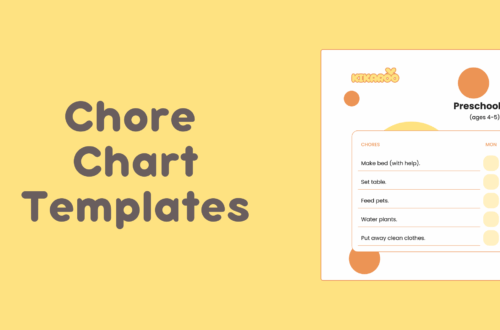Reward based learning for kids is more than just giving stickers or treats. It’s a science-backed way to build motivation, responsibility, and confidence. When parents understand how rewards shape behavior, they can use them thoughtfully to help kids grow and learn.
You set a chore, you remind, you repeat. And still the socks end up on the floor. If this sounds familiar, you’re not alone. Parents everywhere wrestle with how to turn nagging into lasting habits. Reward systems (stickers, allowance, screen time) feel like a magic button. But do they really build responsibility or just short-term compliance?
This article breaks down The Science Behind Reward Based Learning and gives practical, research-informed ways to use rewards so chores build responsibility and kids independence instead of resentment. Ready to swap frustration for a system that actually sticks? Grab this free printable: free printable chore chart by age and follow along.
Why it matters: The Science Behind Reward Based Learning for Kids
At its core, reward based learning in children is an application of operant conditioning. Behaviors followed by positive outcomes are more likely to be repeated. Psychologist B.F. Skinner coined much of the framework: consistent reinforcement strengthens habits (see an overview of operant conditioning on Britannica).
But the story doesn’t end there. Modern motivation research, especially Self-Determination Theory (Deci & Ryan), shows that extrinsic rewards can either support or undermine internal motivation depending on how they’re used. When parents use rewards thoughtfully (as feedback and structure, not bribes), kids are more likely to develop lasting responsibility and internalize tasks.
Two key takeaways from the research:
- Immediate, clear reinforcement improves early learning of chores (operant principles).
- To build long-term responsibility, gradually shift from external rewards toward autonomy, competence, and relatedness (core SDT needs).
References: Britannica on operant conditioning, Deci & Ryan (2000) – Self-Determination Theory.
Practical reward strategies – chores and rewards that work
Below is a scannable, age-aware list of chores paired with reward ideas and reinforcement tips. Use this as a cheat-sheet to match expectations with your child’s developmental stage and to create a reward system that grows into genuine responsibility.
Preschool (ages 2-4)
- Chores: Put toys in bins, put clothes in laundry basket, feed pets with supervision.
- Rewards: Immediate praise, sticker on a chart, 1–2 extra bedtime story minutes.
- Why it works: Short, immediate rewards tie the action to the outcome so toddlers learn cause and effect.
Early elementary (ages 5-8)
- Chores: Make the bed, clear their plate, water plants, set the table.
- Rewards: Small token system (stickers → small prize), simple points system, small allowance tied to consistent completion.
- Tip: Use a visible chore chart so kids watch progress. This reinforces competence and builds kids independence.
Upper elementary (ages 9-12)
- Chores: Load dishwasher, take out trash, fold laundry, help prepare a simple meal.
- Rewards: Earning screen time, points banked toward a bigger reward, occasional choice of family activity.
- Why it works: Rewards can be delayed a bit more to teach planning; begin fading constant external rewards in favor of privileges tied to consistency.
Tweens & Teens (ages 13+)
- Chores: Lawn care, babysitting younger siblings (with oversight), weekly meal planning and cooking, car maintenance basics.
- Rewards: Regular allowance, shared family privileges, autonomy over schedule, recognition of achievement (e.g., “you handled the weekend – thanks!”).
- Tip: Focus on autonomy. Let teens choose which chores they manage and negotiate rewards. This supports internal motivation and responsibility.
Want a printable you can pin on the fridge? Download the free printable chore chart by age to match chores and rewards to your child’s stage.
How to apply rewards effectively (quick checklist)
- Be consistent: Reinforce the desired behavior every time early on, then shift to intermittent reinforcement as the habit forms.
- Be specific: Praise what was done right (“Thanks for putting your dishes in the sink – that helps morning cleanup!”).
- Make rewards meaningful: Tailor rewards to your child (some prefer extra screen time, others value choice or a shared outing).
- Fade rewards gradually: Move from tangible rewards to privileges and then to intrinsic satisfaction and responsibility.
Tips & Common Mistakes
- Don’t confuse rewards with bribes. A bribe is offered to stop behavior now (“Do this and I’ll give you candy”). A reward follows a clearly stated expectation and is earned.
- Inconsistency is the enemy. If a chore is rewarded sometimes but ignored other times, kids won’t learn reliably. Decide on the system and stick with it for several weeks.
- Avoid over-rewarding for every tiny step. Praise effort and progress, but plan to reduce extrinsic rewards as competence develops (see Self-Determination Theory research for why this builds lasting motivation).
- Don’t use rewards to avoid accountability. Rewards should be part of teaching responsibility, not a way to outsource discipline.
- Make expectations clear. Use a visible chore chart or app and set specific criteria for “done” so kids know exactly what earns the reward.
Tracking chores – use technology to reinforce good habits
Tracking is where reward based learning for kids becomes reliable. Whether you prefer sticker charts or digital tracking, the key is visibility and follow-through. Digital tools make it easy to automate rewards, keep track of streaks, and allow kids to mark tasks done (which builds ownership).
For a modern approach, consider a chore app that tracks completion, awards points, and allows families to set rewards together. If you prefer analog, pair a magnet chore chart with a weekly review. Either way, consistent tracking helps children see progress and links chores to outcomes, exactly what the science behind reward based learning recommends.
Try the Kikaroo app to track chores, set rewards, and save time on reminders: Kikaroo – the chore tracker for kids.
Internal links – further reading
- chores by age guide – detailed lists of age-appropriate tasks.
- tips to make chores easier – strategies to reduce conflict while building routines.
- chore chart tools and apps – compare printables and digital solutions.
FAQ
Q: Will offering rewards make my child lazy without them?
A: Not if rewards are used intentionally. Start with frequent, immediate reinforcement, then gradually shift to privileges and autonomy so motivation becomes internal.
Q: How long should I reward a new chore before removing external rewards?
A: It varies. Many parents use consistent rewards for 4-8 weeks to form a habit, then slowly reduce frequency while praising progress and increasing autonomy.
Q: Are chores with no reward okay?
A: Yes. Especially for teens learning family responsibility. However, initially tying chores to clear feedback or small rewards helps establish the routine.
Conclusion
The Science Behind Reward Based Learning for kids shows that rewards can be powerful tools for teaching responsibility and building kids independence, when used thoughtfully. Start with predictable reinforcement, make rewards meaningful, and intentionally fade extrinsic rewards as competence and autonomy grow. Use visual tracking (a chore chart or the Kikaroo app) to keep expectations clear and celebrate progress.
Want an easy place to start? Download the free printable chore chart by age, or try Kikaroo to automate tracking and rewards. Small, consistent steps today build responsible adults tomorrow.

 Home
Home Features
Features Testimonials
Testimonials Downloads
Downloads FAQ
FAQ Blog
Blog







